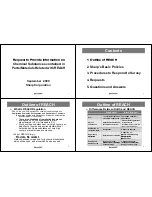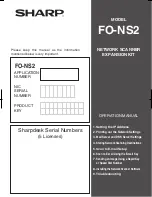
command specifies
pap
as the primary authentication protocol and
chap
as the
alternate.
host1(config-if)#
ppp authentication pap chap
The router requests the use of PAP as the authentication protocol (because it
appears first in the command line). If the peer refuses to use PAP, the router
requests the CHAP protocol. If the peer refuses to negotiate authentication, the
router terminates the PPP session.
NOTE:
The JUNOSe software’s PPP application accepts null usernames during PAP
and CHAP authentication. When the PPP application receives an authentication
request that includes a null username, PPP passes the request to AAA. To take
advantage of this feature, configure your authentication server to support the use of
null usernames.
■
Example 2—Specifies a virtual router for the authentication virtual router context.
This command is available in static configurations and in profiles.
host1(config-if)#
ppp authentication virtual-router boston pap chap
■
Use the
no
version to specify that the router does not require authentication.
■
See ppp authentication.
ppp chap-challenge-length
■
Use to modify the length of the CHAP challenge by specifying the minimum
length and maximum length.
CAUTION:
Do
not
use the
ppp chap-challenge-length
command; increasing the
minimum length (from the default 16 bytes) or decreasing the maximum length
(from the default 32 bytes) reduces the security of your router.
■
Specify the minimum and maximum lengths in bytes in the range 8–63.
■
The maximum length must be greater than or equal to the minimum length.
■
Example
host1(config-profile)#
ppp chap-challenge-length 24 28
■
Use the
no
version to restore the default minimum 16 bytes and default
maximum 32 bytes.
■
See ppp chap-challenge-length.
ppp fragmentation
■
Use to enable fragmentation on an MLPPP link interface and optionally specify
the maximum fragment size, in octets, to be used on the link.
■
Example
Configuring a Dynamic Interface from a Profile
■
581
Chapter 17: Configuring Dynamic Interfaces
Summary of Contents for JUNOSE 11.1.X - LINK LAYER CONFIGURATION 4-7-2010
Page 6: ...vi...
Page 8: ...viii JUNOSe 11 1 x Link Layer Configuration Guide...
Page 26: ...xxvi List of Figures JUNOSe 11 1 x Link Layer Configuration Guide...
Page 34: ...2 Chapters JUNOSe 11 1 x Link Layer Configuration Guide...
Page 230: ...198 Monitoring VLAN and S VLAN Subinterfaces JUNOSe 11 1 x Link Layer Configuration Guide...
Page 258: ...226 Monitoring 802 3ad Link Aggregation JUNOSe 11 1 x Link Layer Configuration Guide...
Page 334: ...302 Troubleshooting JUNOSe 11 1 x Link Layer Configuration Guide...
Page 394: ...362 Monitoring Multiclass MLPPP JUNOSe 11 1 x Link Layer Configuration Guide...
Page 406: ...374 Monitoring POS JUNOSe 11 1 x Link Layer Configuration Guide...
Page 468: ...436 Troubleshooting JUNOSe 11 1 x Link Layer Configuration Guide...
Page 498: ...466 Monitoring Bridged Ethernet JUNOSe 11 1 x Link Layer Configuration Guide...
Page 546: ...514 Monitoring Cisco HDLC JUNOSe 11 1 x Link Layer Configuration Guide...
Page 747: ...Part 2 Index Index on page 717 Index 715...
Page 748: ...716 Index JUNOSe 11 1 x Link Layer Configuration Guide...
Page 774: ...742 Index JUNOSe 11 1 x Link Layer Configuration Guide...
















































